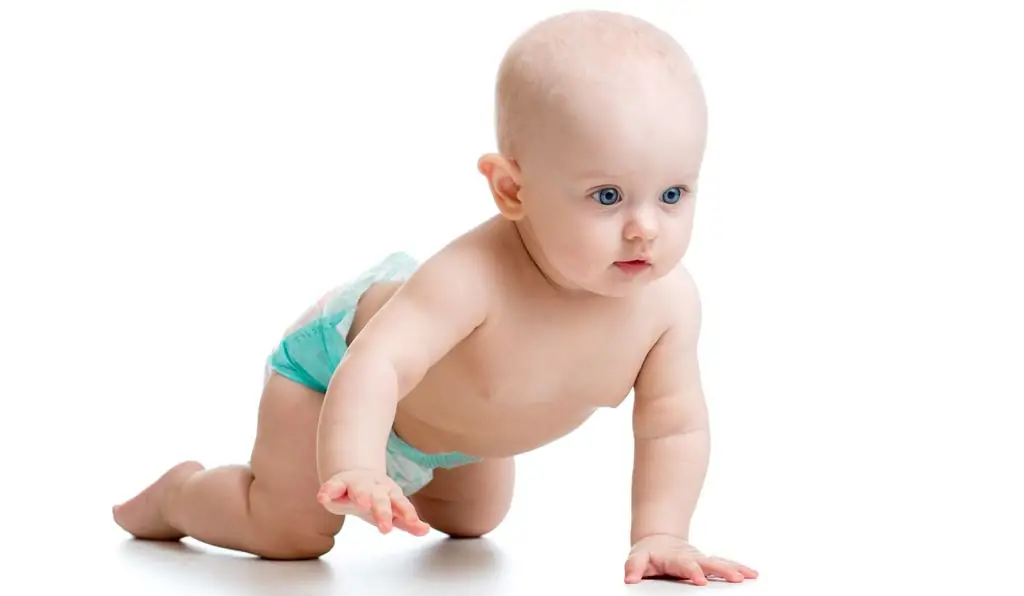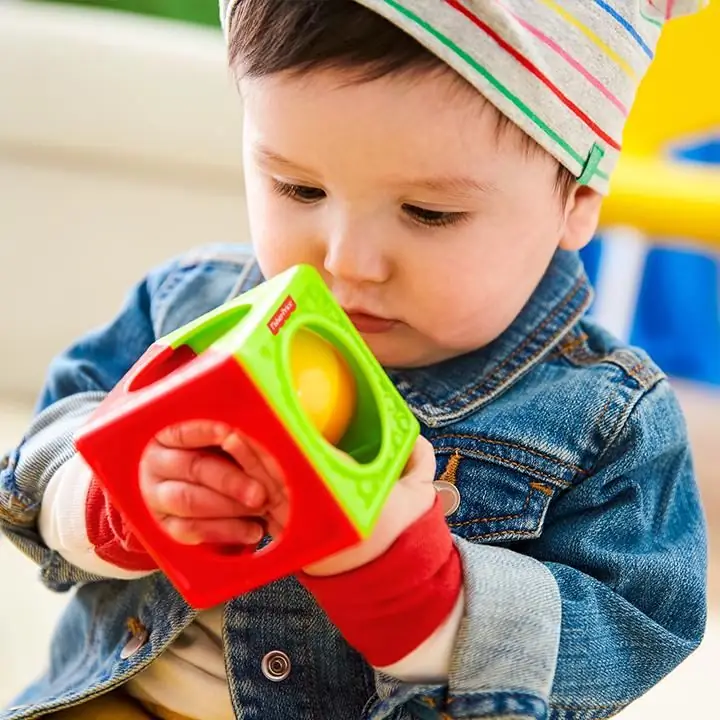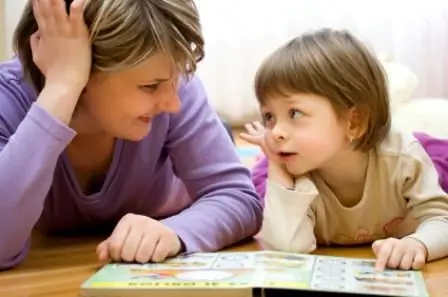2025 Author: Priscilla Miln | [email protected]. Last modified: 2025-01-22 17:55:15
The baby's infancy is the period from the 29th day of his life (the first four weeks the child is considered a newborn) until the end of the first year of life. One can only wonder what significant changes occur in such a short period. Here the baby still does not know how to control his body and can tell his mother about his desires only through a cry, and by the year his skills and requirements are already practically conscious. What happens in these 12 months?
First year of life
Compared to other age periods, in the first 12 months the baby's body grows rapidly, all systems and organs develop very quickly, an intensive metabolism occurs. For example, the weight of the baby with which he was born doubles by 4-5 months, and when the child reaches a year, it triples, amounting to approximately 10-11 kg.

The growth of the child during this period increases bya quarter of a meter, amounting to about 75 cm per year. There is an improvement in the morphological structure and functions of the child's nervous system. In the first 6 months of life alone, the mass of his small brain increases by 200%.
Due to the fact that the functions of the central nervous system are rapidly developing, there is an early development of conditioned reflexes of all analyzers. Quite quickly goes neuropsychic development. It is in the first year of life that the beginnings of speech appear in babies. When a baby is only 2 months old, all his senses are so developed that the baby picks up and distinguishes different signals sent from outside.
How are the movements developing?
Perhaps all mothers know that babies are born with the necessary minimum of unconditioned reflexes: sucking, grasping, stepping reflex. For the period from 1 to 3 months, babies begin to hold their heads. By 4, they can already roll over from the back to the side, a little later, and on the tummy. Toddlers reach for rattles, take them in their hands. Now they are quite inquisitive.

By 5 months, babies begin to crawl, pulling their legs up to their tummy, they arch their backs in a very funny way. True, not everyone succeeds in this way.
By the age of six months, children begin to sit down, kneel in the crib, bravely holding on to the crossbars. If they are driving down the street in a stroller, they carefully study everything that surrounds them. Toddlers are interested in everything - cars, flying pigeons, running dogs, cats and much more.
By 7-8 months, babies boldly stand up incots, walk along the railing, holding on to the handles.
Until the time when the kids start walking, there is very little time left. This usually happens when babies reach 10-12 months of age.
Childhood is quite interesting for both him and his parents. Every day for the baby is marked by a new skill and discovery. The eyes of a loving mother can notice even the smallest changes in the behavior of the baby. But do not forget that all kids are different: for example, someone starts to sit already at 5 months, and someone only at 7. This is completely natural, so you should not rush things, but you just need to enjoy every moment.
Oh, those teeth
The infancy of a baby is unimaginable without the appearance of teeth. It doesn't go smoothly for everyone. Children may have a fever, tearfulness and strong salivation, and a decrease in appetite.
At about half a year, the baby's first teeth appear - the two lower incisors, and after a couple of months - the two upper ones.

By 10 months, two upper lateral incisors erupt in children, and by the year - two lower lateral incisors.
By the year, the little ones usually have eight milk teeth. If a child does not have so many teeth, parents should not worry: everything happens strictly individually. For some babies, the first teeth appear only by the age of one.
How does speech develop?
In infancy, the development of the baby's speech also occurs.
For the first six months, the crumbs laugh a lot, walk, pronounce simplesounds: “agh”, “gee”, “ah-ah”.
After six months (up to about 9 months), the baby begins to pronounce sounds such as "ma", "ama", "ba". By 10-12 months, the little one repeats the sounds of adults. He can already say “ma-ma”, “ba-ba”, “give”. In his first year of life, a child begins to speak his first meaningful words.
It should be clarified that the speech addressed to him by mom, dad, grandparents perceives the little one from birth. But during this period, he recognizes intonation more than speech itself. A soft spoken word can calm a baby, while a raised or irritated voice can be frightening.

At six months, the baby already responds to his name and smiles meaningfully. After a month or two, he already begins to understand when they say to him: “come to me,” in response, he holds out his hands. At the same age, the child understands the word "no". Hearing the word addressed to him, he breaks away from unnecessary activities.
At a year old, a baby can wave a pen to adults at their farewell gestures and the words "bye-bye".
In order for the baby to develop speech faster, it is necessary to read fairy tales to him, sing songs, talk to the baby more often.
About breastfeeding
A baby comes into this world unsuitable for independent existence, so feeding a baby is an integral part of his life support. Parents are obliged to take care of him to ensure all his physiological needs. Different types of feeding, depending on the existing capabilities and needs of the child, involve the usebreast milk, artificial formulas and different types of complementary foods. Experts believe that breastfeeding is the best for babies.
Infant feeding should combine nutrients, fluids, vitamins that are necessary for the body of a newborn baby. All of these components are present in a mother's breast milk.
Necessary basis
Mother's milk contains the right balance of nutrients, which changes as the baby grows, as well as antibodies that protect the baby from various diseases during the most sensitive period of infancy. Based on this, the process of natural breastfeeding can be regarded not only as a form of nutrition, but also as a basis for the proper formation of the body's immunity.

The natural mechanism that provides the baby with the necessary period for feeding (until the main part of the milk teeth grow) lasts 1-1.5 years. It is during these months that the baby needs breast milk so much. Until what age to feed them to their child, each mother decides on her own. In most cases, this lasts approximately 1.5-2 years.
Recommended:
Method of child development: popular methods, authors, principle of development and age of children

There are many methods of early childhood development. The right approach allows you to unleash the creative potential of the child, teach him to read and write much earlier. All methods of child development have their advantages and disadvantages. Which option to choose? It is worth proceeding from the individual characteristics of a particular baby
What time do boys start crawling: age norms, the appearance of crawling skills, features of the boy's development

Is it true that girls and boys develop differently? Yes, it's true, and the female sex develops faster than the male. According to statistics, girls quickly begin to sit and crawl, walk. But still, gender does not play a special role in physical development, and doctors do not pay attention to whether a boy or a girl is in front of them, but are guided by general data. The ability to crawl and sit independently also depends on the weight, on the development of the baby
Child development per year and 4 months: important points, mental activity, growth and weight norms

This is a difficult age in which the baby becomes more inquisitive, mobile and sociable. Of course, the child wants to explore the world around him, run, jump, talk, which is not always good. Therefore, if parents give the baby as much attention as possible, they will achieve great success together
Mental development of children: main stages, features and conditions, age norms

The mental development of a child is a complex, lengthy, continuous process that occurs under the influence of various factors. They are hereditary, biological, social. The development of the psyche is an uneven process. Conventionally, it can be divided into several stages. In our article, we will dwell in detail on the features of the mental development of children and mental processes characteristic of different age groups
What should a child know at 3? Age features of children 3 years old. The development of the speech of a child of 3 years

Most modern parents pay a lot of attention to the early development of children, realizing that up to three years the child learns easily during the game, and after that it becomes much more difficult for him to learn new information without a good initial base. And many adults face the question: what should a child know at 3 years old? You will learn the answer to it, as well as everything about the features of the development of children at this age from this article

